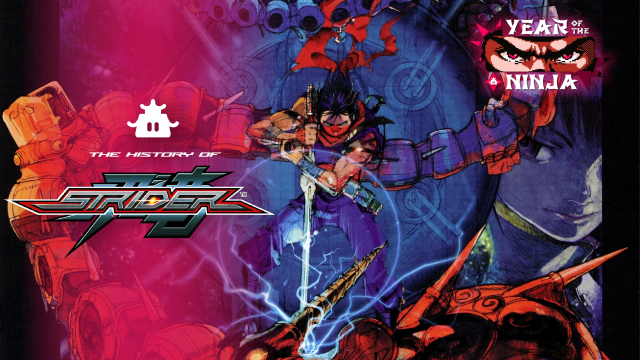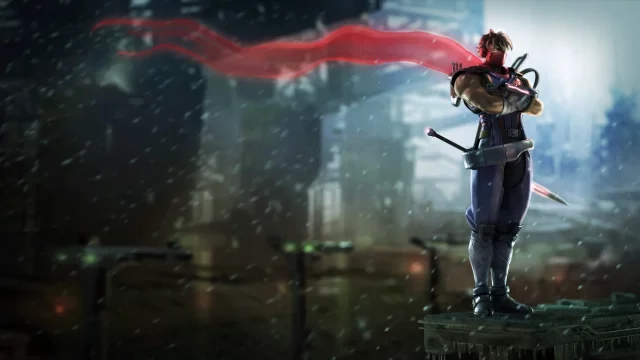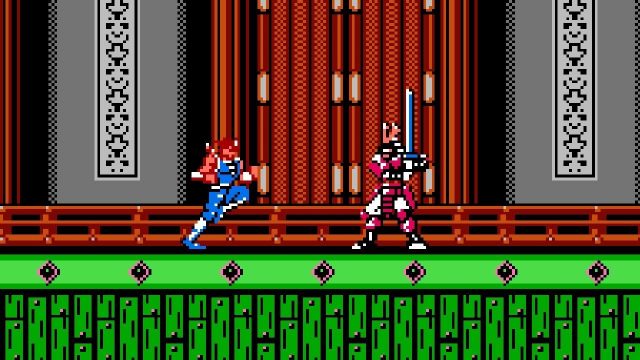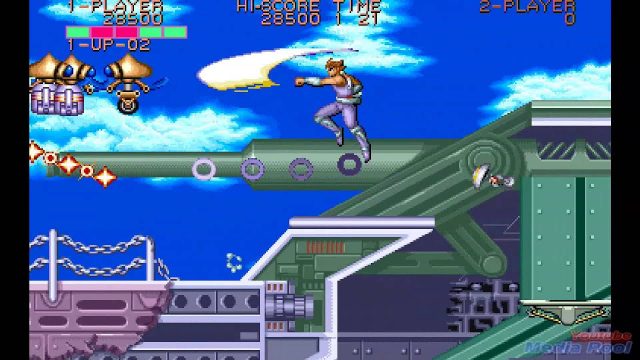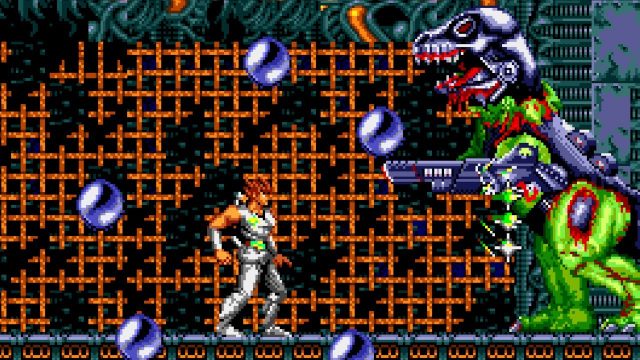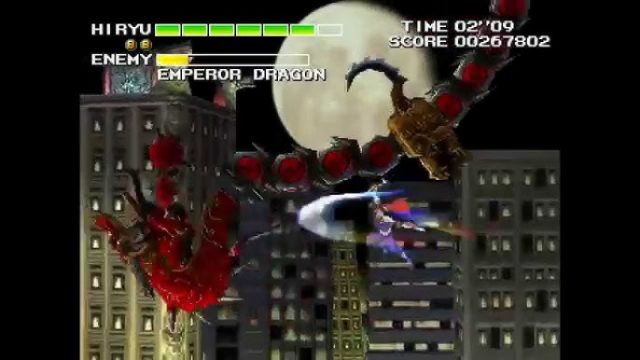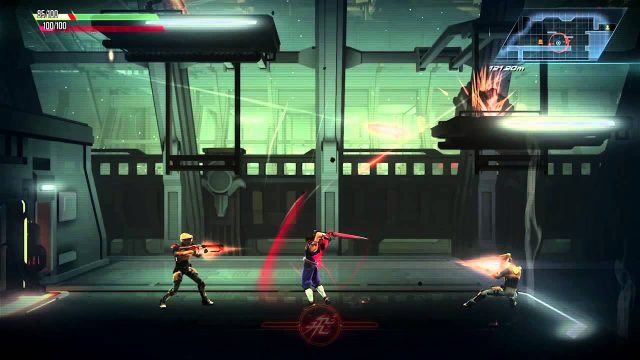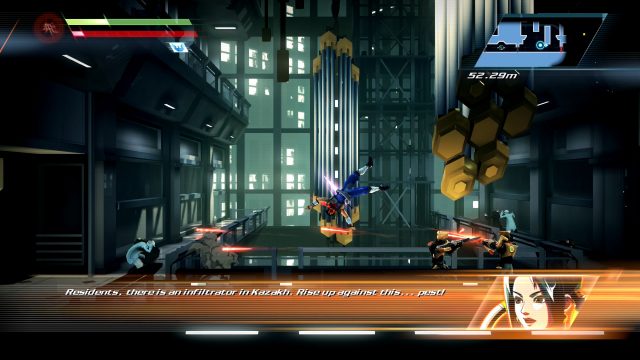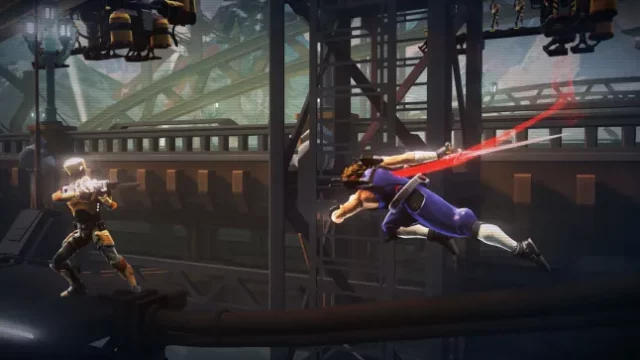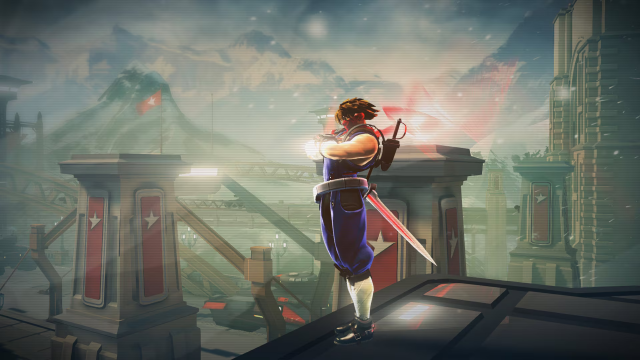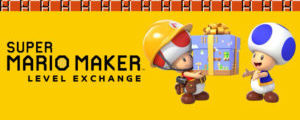In anticipation and celebration of this year’s release of Ninja Gaiden 2 Black, Ninja Gaiden: Ragebound, Shinobi:Art of Vengeance, and Ninja Gaiden 4, Nintendojo takes a look back at the history of this iconic genre, the games that defined it, and the new titles joining the pantheon in our special Year of the Ninja series.
The two biggest names in 2D ninja action platformers are making their long-awaited returns this year, with NINJA GAIDEN: Ragebound having released at the end of July and SHINOBI: Art of Vengeance coming at the end of August. Shinobi had gone 14 years without a new title, or 23 if you don’t count the 3DS title made by (no offense to them) mobile game developer Griptonite. If you exclude that and the 3D reboot on PS2, and you set your watch by the last widely acknowledged 2D Shinobi game, it’s actually been 32 years since Shinobi III. And if you exclude the Xbox trilogy and various rereleases, it had been a similarly depressing 34 years since Ninja Gaiden III: The Ancient Ship of Doom.
The third biggest name in 2D ninja action platformers is doubtless Capcom’s Strider, but it went ten years between the blockbuster Strider (1989) and its successor Strider 2 (1999), and then took another 15-year break before Double Helix made their entry in 2014 (confusingly also called Strider). At this point the protagonist Strider Hiryu has actually been in more non-Strider games (e.g. Marvel vs Capcom) than Strider games, and his MvC design is generally seen as his canonical look at this point.
While it’s a shame that Capcom isn’t joining in these “year of the ninja” celebrations with a new Strider game, we are here not to lament Strider Hiryu’s absence. Rather, let’s look back at the history of the Strider series and see what 2014’s Strider (the first of these three series to get a relatively high profile “modern retro” sequel) can reveal about the evolution of retro or arcade-inspired games generally.
This is going to sound like a joke, but there are five Strider games and their names are Strider, Strider, Strider II, Strider 2, and Strider. For the sake of clarity and brevity the three Striders will also be referred to below as (1) Strider, (2) NES Strider, and (3) Strider 2014.
Capcom’s Kouishi Yotsui was responsible for the initial seed of the Strider concept, and after it was fleshed out collaboratively, Yotsui was put in charge of development of the arcade game. This arcade version would go on to be the basis of every console and home computer version except one – the NES game is entirely different. While Yotsui’s team worked on the arcade version, other teams worked on both NES Strider and a six volume manga. All three of these realizations of the Strider vision involved a team of high tech ninja mercenaries (the Striders), starred a protagonist named Hiryu who was attempting to stop a world takeover, and used Kazakhstan (called Kazakh in keeping with its then-identity as part of the USSR) as its primary location.
Strider (NES)
The manga and NES Strider ended up having very similar stories, sharing a great many characters, the same villains, the same villainous plot, and many of the same twists. Of course, the manga tells the story in greater detail and to greater effect, but the NES game is much more story-focused than was the norm at the time. Aside from that, the NES game’s biggest claim to fame in the sweep of series history is that it involves a lot of backtracking and some proto-Metroidvania elements, especially in its Kazakh region, and is therefore going to be something of an inspiration for Strider 2014’s structure.
Unfortunately, NES Strider is a very difficult game to even conditionally recommend, as the controls are, frankly, not up to snuff for a Capcom title. It’s not that the controls aren’t in keeping with modern conceptions of quality of life, or are simply demanding. It’s that they do not reliably work. Hitboxes feel very wonky in this game, especially where platforming is concerned, and Strider Hiryu’s signature “triangle jump” (which lets him climb up deep shafts) is hard to successfully execute even a quarter of the time. Sadly, it might be Capcom’s worst game on the NES.
Strider (Arcade)
The arcade version of Strider is a very different game, clearly influenced by Capcom’s Ghosts n’ Goblins in terms of exacting action platforming, memorization-heavy gotcha traps, and a bottomless appetite for the poor player’s quarters. Where Strider differs from Ghosts n’ Goblins is in its level of camera zoom and in its visual creativity. The sprites in Strider are much larger than in Ghosts & Goblins, allowing for a much more visually arresting image but also making it much harder to see threats coming in time to react to them. It is a trial and error sort of game.
The visuals really are spectacular, though, not just for the spritework but for their creativity. Strider one-ups the standard 80s “gritty neon cityscape with a side of ninjas” with a kitchen sink approach, blending 70s sci-fi, cyber ninjas, sky pirates, mecha-dinosaurs, regular dinosaurs, Amazons, a Soviet-futurist cloud city, and the Kazakh parliament human centipeding itself into a dragon. In 1989 this must have been an absolute showstopper, and even in 2025 the quality of the vision shines through even as the level design frustrates. Whether a given player is likely to enjoy Strider in toto hinges on whether the majesty of its creativity infatuates them long enough to get past the hump of learning all or at least most of the game’s unintuitive gotchas.
Regardless, Strider stands out among its late 80s ninja contemporaries for not just its flash but its acrobatics and its protagonist’s super-rapid sweeping sword strikes, and these were key traits that would be carried forward to its sequels and spiritual successors. Unlike the other games discussed in this article, Strider is playable on the Switch, via Capcom Arcade Stadium, and given how widely it’s been ported it’s worth trying for anyone who’s read this far.
Strider II (SEGA Genesis, Game Gear, & Master System)
Strider II merits a mention only to explain why it does not merit a mention. It was developed under the supervision not of Capcom but of U.S. Gold, the company overseeing most of the ports of Strider. U.S. Gold’s team unfortunately did not have Capcom’s level design or game design acumen, and a player who is looking for more action in the mold of Strider is better off looking at Kouichi Yotsui’s 1996 spiritual successor, Cannon Dancer – Osman, which is also available on Switch.
Strider 2 (PlayStation & Arcade)
By the time Strider 2 was released in 1999, the ninja action platformer was, like seemingly every other 2D genre, on life support. They would receive a second life as handhelds got stronger but not too strong (e.g. Ninja Five-O), and as the indie scene started to flourish (e.g. Oniken), but the late 90s were pretty dry outside of Strider 2, which makes it somewhat unique. It adopted the 2.5D style common in PlayStation-era arcade genre titles, with scaling sprites for the player and enemies, and 3D models for the terrain.
Strider 2 ramps up the original’s speed, acrobatics, and offensive flurries almost to the breaking point. There are five stages, just like in the original, but in Strider 2 they are broken into a large number of much shorter vignettes. The game makes several changes which support the ninja fantasy of just tearing through screens of enemies without stopping. Hiryu now has a double jump to facilitate air recovery, he only takes some damage if he falls into a pit rather than dying outright, and most importantly he no longer takes contact damage from enemies, only their attacks. Naturally this also makes the game easier, and indeed Strider 2 puts up much less of a fight than the original.
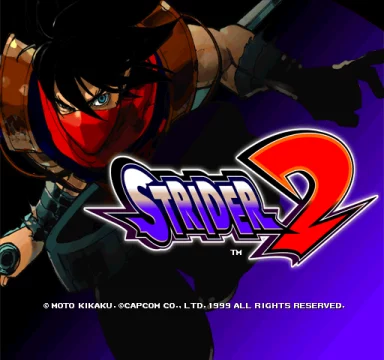
Strider 2 provides score play as its chief challenge incentive. Getting high ranks in Strider 2 requires exacting play, but thanks to its kineticism it’s fun even when you fail. And if you don’t care about anything but survival, Strider 2 can be cathartic. The PlayStation port also allows you to unlock an alternate playable character, Strider Hien, on completion. Hien throws powerful boomerangs instead of swinging a sword, which honestly makes the game a little easier on average. But as the player does not have full control over the trajectory of those boomerangs, the Hien mode has its own unique challenges too.
Aesthetically, Strider 2 is not nearly as much of a showstopper in 1999 terms as Strider was in 1989 terms, but anyone who has developed a taste for well-done PlayStation polygon work will enjoy what’s on display. What’s more disappointing is not the technical approach but the relatively less creative scenery here as compared to Strider – not a single human centipede or mecha-dinosaur to be found, though the cyborg mammoth is appreciated. Regardless, the inter-stage art done by Capcom’s Harumaru (who also did art for Street Fighter Alpha 3 and the Street Fighter 3 series) is gorgeous and stylish.
Strider 2 was unapologetically an arcade game ported to console in an era when reviewers no longer gave arcade design the respect it deserved. This was a game that took only 30 or 40 minutes to “beat” and the player could credit-spam their way through. So from the point of view of the late 90s zeitgeist that thought more hours and more PlayStation discs meant a more epic (and therefore higher quality) game, Strider 2 was doomed. And it got dinged by reviewers for exactly the uncreative reasons you’d expect. While there are serious criticisms to lob at the game (e.g. its scoring system is a little too lopsided in the direction of avoiding all damage, and the last boss’s regenerating turrets are annoying), that’s not what we got in print in 1999. Instead, the reception the game received went some way toward explaining why Strider 2 was a last gasp of 90s arcade action rather than the vanguard of a renaissance.
Strider 2014 (PlayStation 3|4, Xbox 360|One, & Steam)
Strider 2014 was produced not by Capcom but by the now-defunct Double Helix, a company I had previously most associated with butchering Front Mission in 2010’s Front Mission Evolved. But Tony Barnes, Strider 2014’s director and writer, was a huge series fan who described Strider 2014 as his dream game and seemed to take the assignment quite seriously. Indeed, whatever criticisms one might make of the game, one cannot fault it for insufficient attention to the hallmarks and signifiers of its predecessors. If anything, it is too concerned with synthesizing the series’ incongruent precedents to make something new. Strider 2014 attempts to hybridize all of NES Strider, the arcade original, and Strider 2, while wrapping it in the darker aesthetics and obligatory Metroidvania structure expected of latter day side scrollers.
For better or worse, Strider 2014 does not risk repeating Strider 2’s chilly reception by being an all killer, no filler album-length romp. Instead, we have a game that slowly doles out powerups and involves a lot of backtracking. To be fair to Strider 2014, NES Strider presents a clear precedent for this sort of structure. And also to be fair, Strider 2014 is a solidly made game with none of the NES game’s jank, so that backtracking is at least pleasant or at worst unobjectionable, and I don’t mean to insult Double Helix’s work by invoking NES Strider.
The combat looks at first to be simply a retread of Strider 2’s lethality and velocity, though zoomed out and a little more muted and anemic. To give it proper credit, by the time you reach the game’s back half Hiryu’s combat vocabulary has expanded to include an offensive air dash, four swords (each with different perks), and other tools like kunai and retooled versions of his arcade game Options. If you play on Normal difficulty, that’s about all you can expect from Strider 2014’s combat – the ease of playing Strider 2 for survival, without concern for rank, and with extra tools you never need to use.
On Hard difficulty, though, while this never remotely approaches the difficulty of Strider, enemy formations and fire patterns (and damage output) do start to become engaging and sometimes even genuinely threatening. The series of boss fights involving the Winds are a particular highlight, as are some others in the back half. However, the level of success here is mostly just that the game remains engaging, not that it’s a game with combat good enough to fire up just to enjoy that, because the challenge and enemy design is not doing much to test the player.
The level design tends toward the immediately self-explanatory, which seems like it would be good for the pace but contributes to a feeling of filler that plagues the whole runtime. Here the attempt to combine the DNA of the NES and arcade titles falls short. The arcade titles are each a tight, varied megamix of setpieces, and the NES game is a bunch of bland corridors and boxy rooms. Unfortunately, Strider 2014 takes firmly after the NES game. There’s very little enemy variety, a lot of repeated room designs, and a very narrow aesthetic range. Strider 2014 is rich in heart, but perhaps poor in soul. The wow factor, the burning desire to show the player something they’ve never seen before, is just not there.
As the game is largely too easy to play on Normal for anyone halfway competent with 2D action games, here’s a caveat for those playing the game for their first time on Hard. There is a clear point of no return, and immediately after that point of no return, the difficulty spikes several times over. I almost admire the cruelty of the prank, as the game doesn’t allow you to roll back your save or increase your power in any way after that point. If you’re not careful (or good enough) you may essentially soft lock your playthrough. So if you find yourself thinking, “I’ve explored enough, surely that’s more than enough power collected to stomp the rest of the game,” maybe think again or get ready for a very big increase in challenge. Personally I appreciated the increase in difficulty, and finally engaged with Hiryu’s whole toolkit. Arguably this last segment is a high water mark for the series and a template for what good Strider combat could look like going forward… but it does feel out of step with the preceding 6 hours.
The story works in elements of both the NES and arcade titles, largely feeling more in line with Strider and Strider 2’s story, keeping Grandmaster Meio as the chief antagonist, but it does follow the manga and NES title in fleshing out the Striders a bit more and foregrounding the idea that Hiryu is the last hope of both the Striders and earth.
While it probably wouldn’t compare well head to head if released today next to the virtuoso pixel art of Ragebound or the sumptuous hand drawn look of Art of Vengeance, I can at least hope that Capcom gives Strider 2014 (and Strider 2) a second life on modern systems including Switch 2. Out of the box, Strider 2014 does not control nearly as well as Strider 2, as it makes the extremely common 360-era mistake of insisting that it be controlled with the analog stick instead of the d-pad. As it stands, only the PC version lets the player remap the controls to use the d-pad instead (thanks to tools like Steam), but with a proper rerelease maybe this most glaring issue with Strider 2014 can be fixed for a wider audience. While it gives up too much of what makes the arcade games special in trying to make a 6-to-8-hour, progression-focused experience out of it, its heart is in the right place.
FURTHER READING
-
Translated interview with Kouichi Yotsui: https://lscmainframe.kontek.
net/features/kyotsui.html -
Translated interview with various Capcom staff shortly after the release of Strider: https://shmuplations.com/cps1/
-
Retrospective review of Strider 2014 by YouTube channel DenDensetsu, with a comment from director Tony Barnes: https://www.youtube.com/watch?
v=FZ7rPv3rFIc (bonus: this series retrospective video from Slope’s Game Room also includes some comment section contributions from Tony Barnes)
Please enjoy these other gaming history features:




 ShareThis
ShareThis